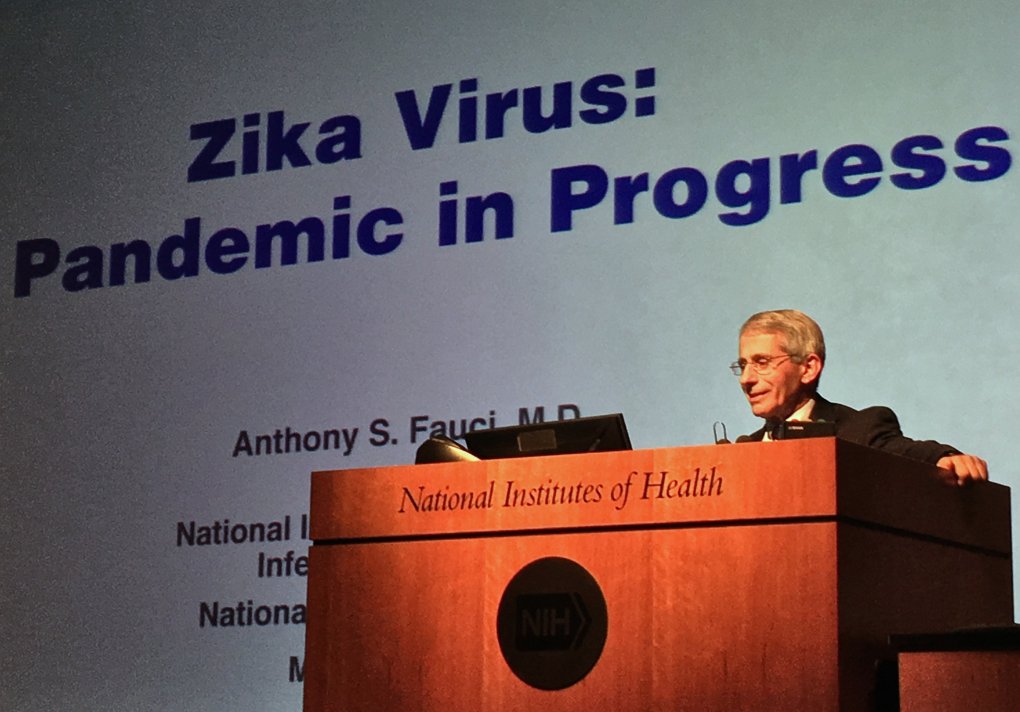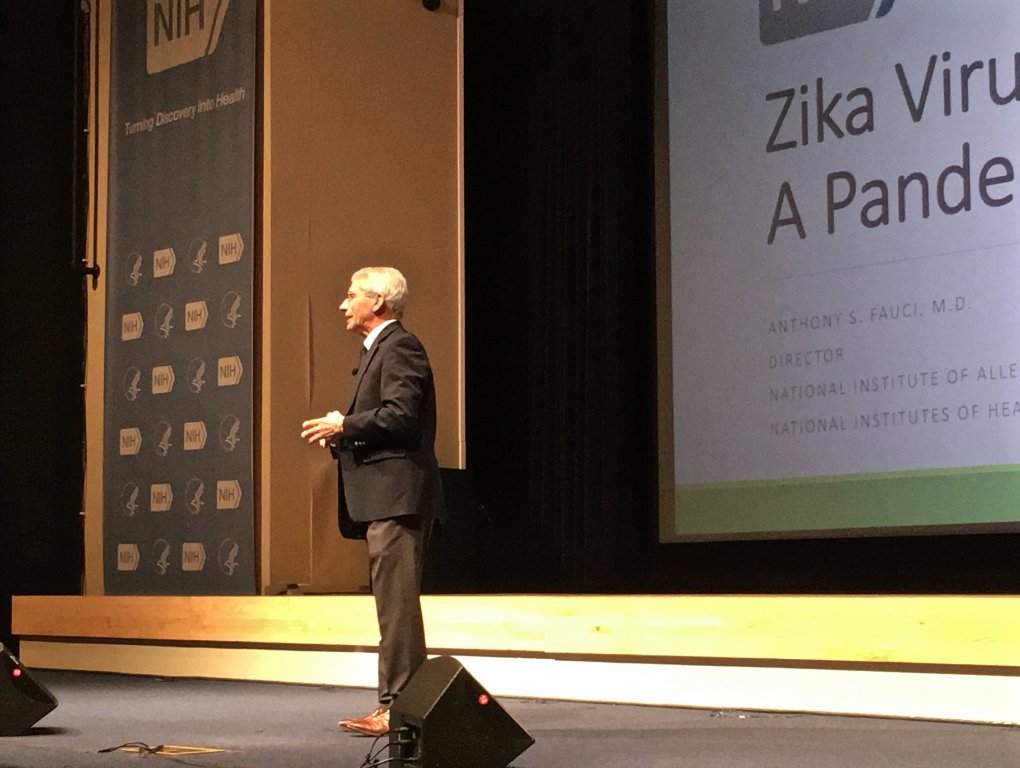4 Key Takeaways From “Zika Virus: A Pandemic in Progress”
As the evolving Zika virus pandemic raises both fears and questions in urgent need of answers, Anthony Fauci, M.D., director of the NIH’s National Institute of Allergy and Infectious Diseases (NIAID) and an IRP senior investigator, rose to speak on where the virus stands in relation to humans around the world.

Dr. Fauci addressed the audience in Masur Auditorium at the NIH Clinical Center, and the video is available to watch online. Here are some highlights:
- The emergence and reemergence of infectious diseases is “a perpetual challenge” that we have to be prepared for. The current situation is helped in that scientists were familiar with the Zika virus prior to this outbreak. First discovered in the Zika Forest of Uganda, the Zika virus is a single-stranded, enveloped RNA virus in the family Flaviviridae, genus Flavivirus. Dr. Fauci noted that, ”We have a lot of experience with closely related flaviviruses, such as dengue,” West Nile, and yellow fever viruses. In fact, a recent clinical trial of an experimental dengue vaccine developed by intramural NIH and FDA scientists found that volunteers were all protected when later infected with dengue virus, while the volunteers given a placebo vaccine all developed the infection.
- When infected with the Zika virus, ”About 80% of individuals have no symptoms,” and “there’s almost no mortality,” Dr. Fauci explained. Symptoms that can occur include fever, rashes, conjunctivitis, arthralgia, and some myalgias. It is spread through mosquito bites and sexual transmission, specifically semen. It is suggested that people take basic preventive measures, such as abstaining from sex or properly using condoms during sex if your partner has recently traveled to an area with Zika, putting up screens wherever possible, and removing standing water from outdoor areas to reduce mosquito populations (follow CDC guidelines for more information). “Standing water isn’t just a big, big tub that you have in the back yard,” Dr. Fauci explained. “Standing water is a little cup that’s out there, a little plant pot that has water in it.” He noted that some mosquitoes breed in as little as a capful of water.
- According to the NIH’s National Institute of Neurological Disorders and Stroke (NINDS), “Microcephaly is a medical condition in which the circumference of the head is smaller than normal, because the brain has not developed properly.” Many people have been wondering if the Zika virus is causing microcephaly in the fetuses of infected pregnant women. To date, there is no conclusively proven causal connection between the Zika virus and microcephaly. However, after discussing some of the most recent data—including lab studies1, 2 and case reports suggesting a causal connection between the Zika virus and microcephaly—Dr. Fauci confirmed that NIAID, NICHD, and others are doing cohort and case control studies. “We’re going to get the definitive answer, and I think we all know what the definitive answer is going to be, but you just want to prove it scientifically,” he said.
- While Dr. Fauci acknowledged that “there’s no Zika-specific treatment,” he did announce that “there are multiple candidates in the queue” for a future Zika virus vaccine. A Phase I clinical trial will likely begin for the most viable vaccine candidate in September 2016.

It’s important that people follow CDC advisories on preventive measures and travel precautions, which are being updated in real time based on changes in the current pandemic situation, while research and development for a vaccine continues.
Dr. Fauci’s full lecture can be viewed on the NIH Videocast website. To follow and attend future events on NIH campuses, please bookmark the IRP Events page.
Related Blog Posts
This page was last updated on Monday, January 29, 2024
